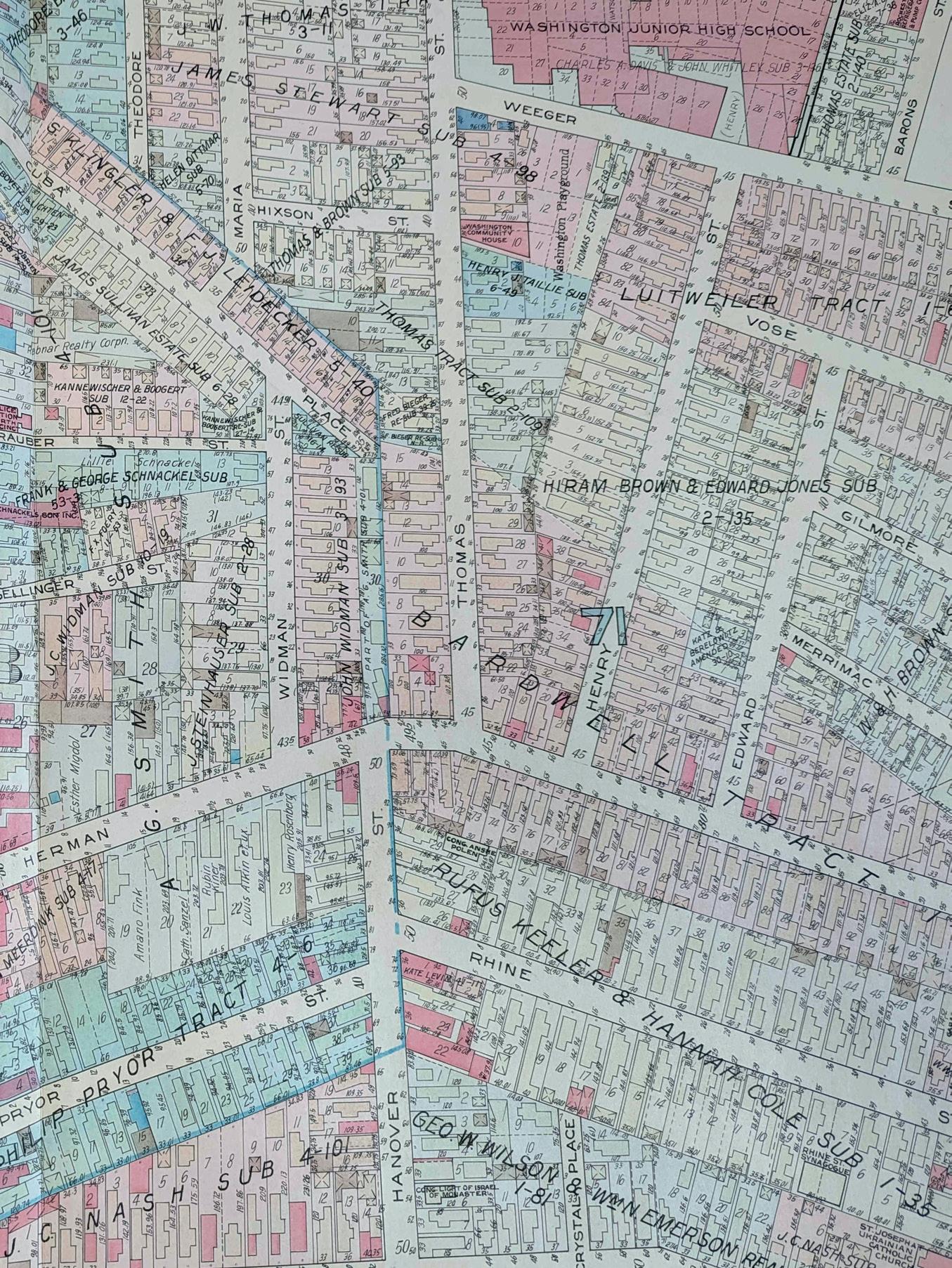


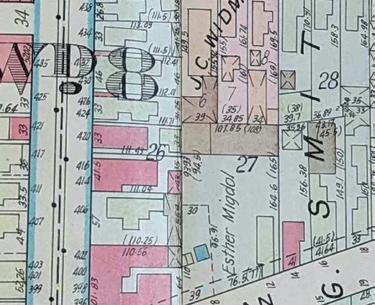

Toward a Singular Goal
100 Years of the New York State
Land Title Association













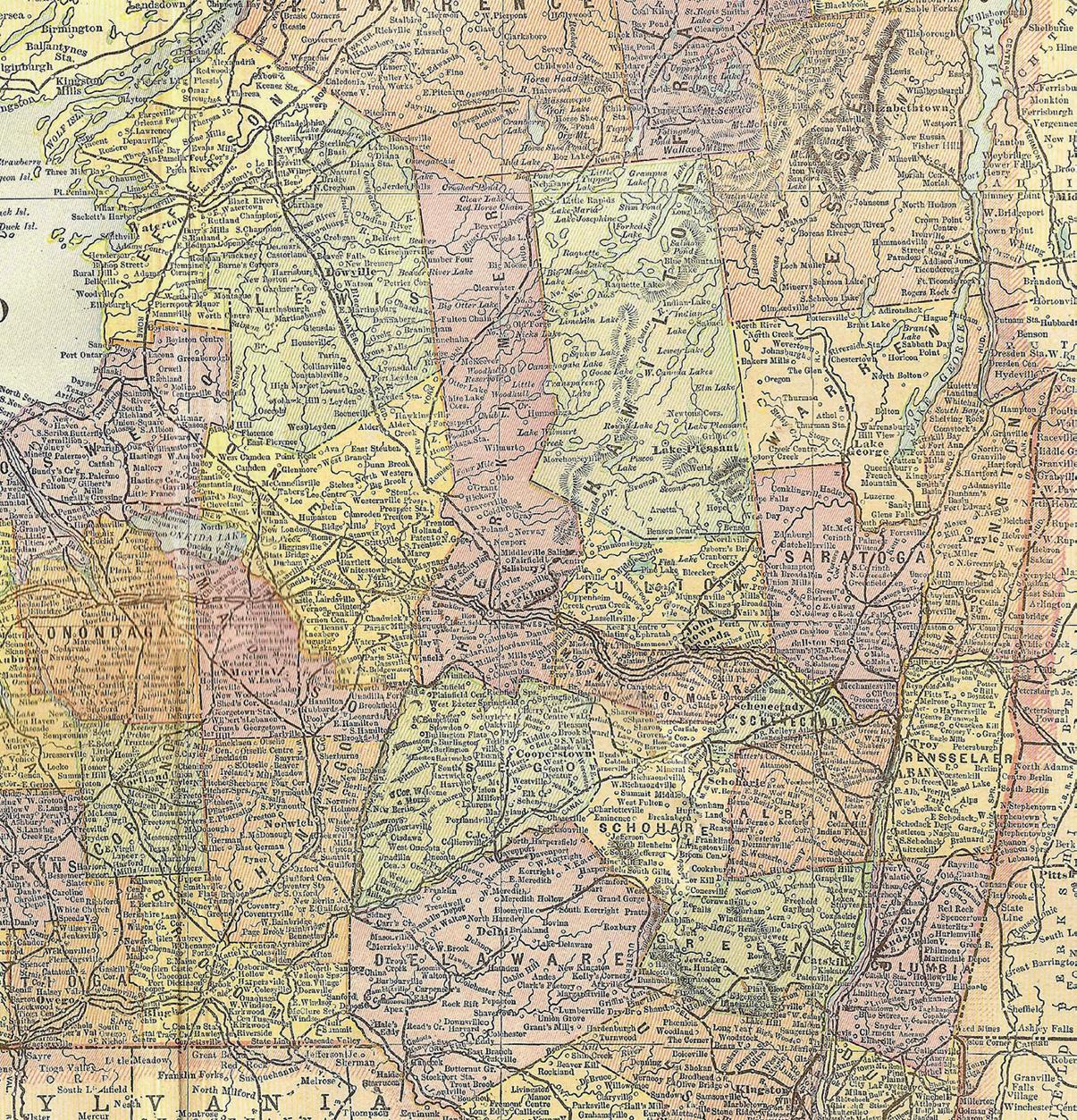
© 2023 New York State Land Title Association 120 Broadway, Suite 945 New York NY 10271
All rights reserved. No part of this book may be reproduced or transmitted in any form or by any means, electronic or mechanical, including photocopying or recording, or by any information storage and retrieval system, without permission in writing from New York State Land Title Association.
Author
Amy Meadows
Editors
Dawn Pereyo
DeAnna Stancanelli
Robert Treuber
Regina Capone
Bookhouse Group, Inc.
Editorial Director
Rob Levin
Director
Renée Peyton
Photo Management
Stacy Moser
Book and Cover Design
Rick Korab
Special Thanks to Orange County Clerk Kelly Askew, Bob Bannon, Michael Berey, Buffalo History Museum, Paul Bugoni, LouAnn Cassar, Rafael Castellanos, Bill Colavito, Bill Collins, Robert (Ted) Dacey, Richard Estrella, Amy Kelly, Sarah Labar, Stan Lacher, Larry Litwack, Tony Maiocchi, Mike Miglino, Onandaga Historical Association, John Piccirillo, Tim Provost, Harold Schwartz, Felice Shapiro, Mike Skalka, Eric Swarthout, Tommy Tafuri, Nancy Treuber, and Sal J. Turano for their contributions to this book.
Book Development by Bookhouse Group, Inc. Covington, Georgia www.bookhouse.net




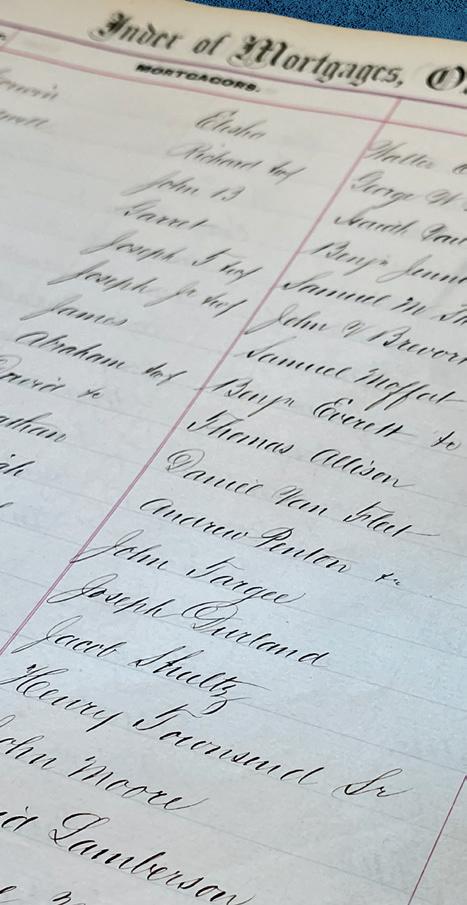
 [Top left] Continuing education is a key component of the NYSLTA organization, which encourages members to focus on professional development at every level of their career. [Top right] An index of mortgages, like this one from the 1800s, is symbolic of the title industry and its devotion to accuracy. [Center] Professionalism is of the utmost importance to the NYSLTA, as indicated by the Great Seal of New York State, which is used on the state’s official letterhead and public documents printed under its authority. The Goddesses of Liberty and Justice preside over a banner proclaiming “Excelsior”—referring to the state’s quest for excellence. [Bottom] Much of the association’s advocacy efforts take place in the halls of the Assembly Chamber in Albany, New York.
[Top left] Continuing education is a key component of the NYSLTA organization, which encourages members to focus on professional development at every level of their career. [Top right] An index of mortgages, like this one from the 1800s, is symbolic of the title industry and its devotion to accuracy. [Center] Professionalism is of the utmost importance to the NYSLTA, as indicated by the Great Seal of New York State, which is used on the state’s official letterhead and public documents printed under its authority. The Goddesses of Liberty and Justice preside over a banner proclaiming “Excelsior”—referring to the state’s quest for excellence. [Bottom] Much of the association’s advocacy efforts take place in the halls of the Assembly Chamber in Albany, New York.
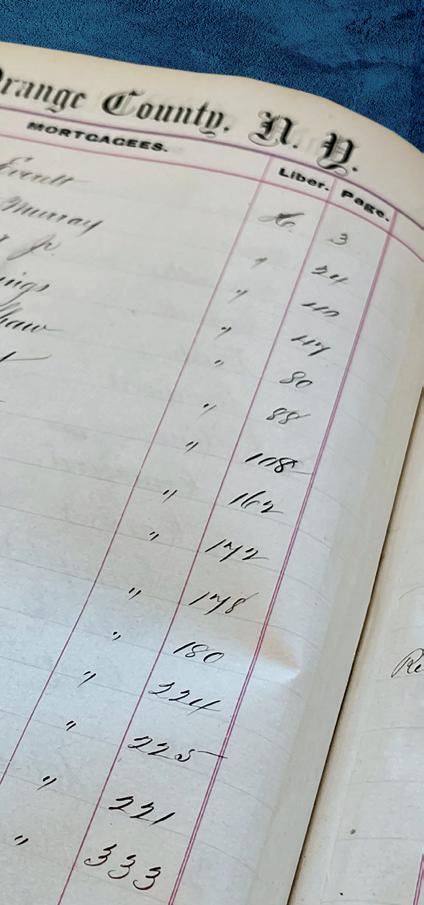
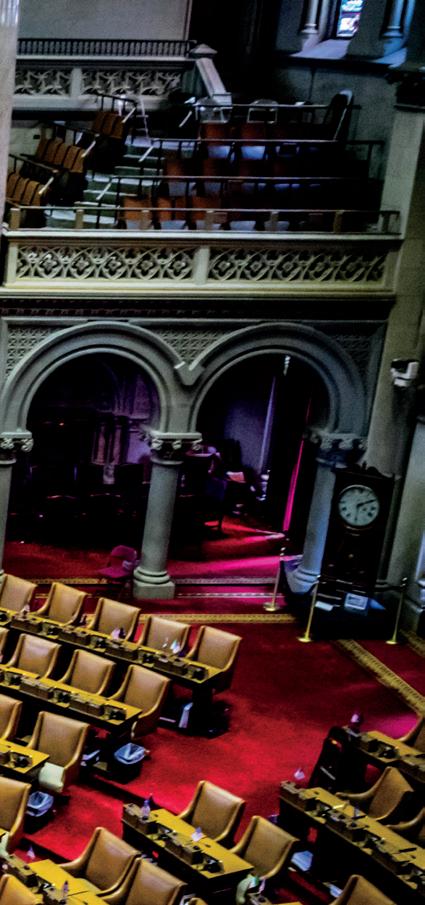
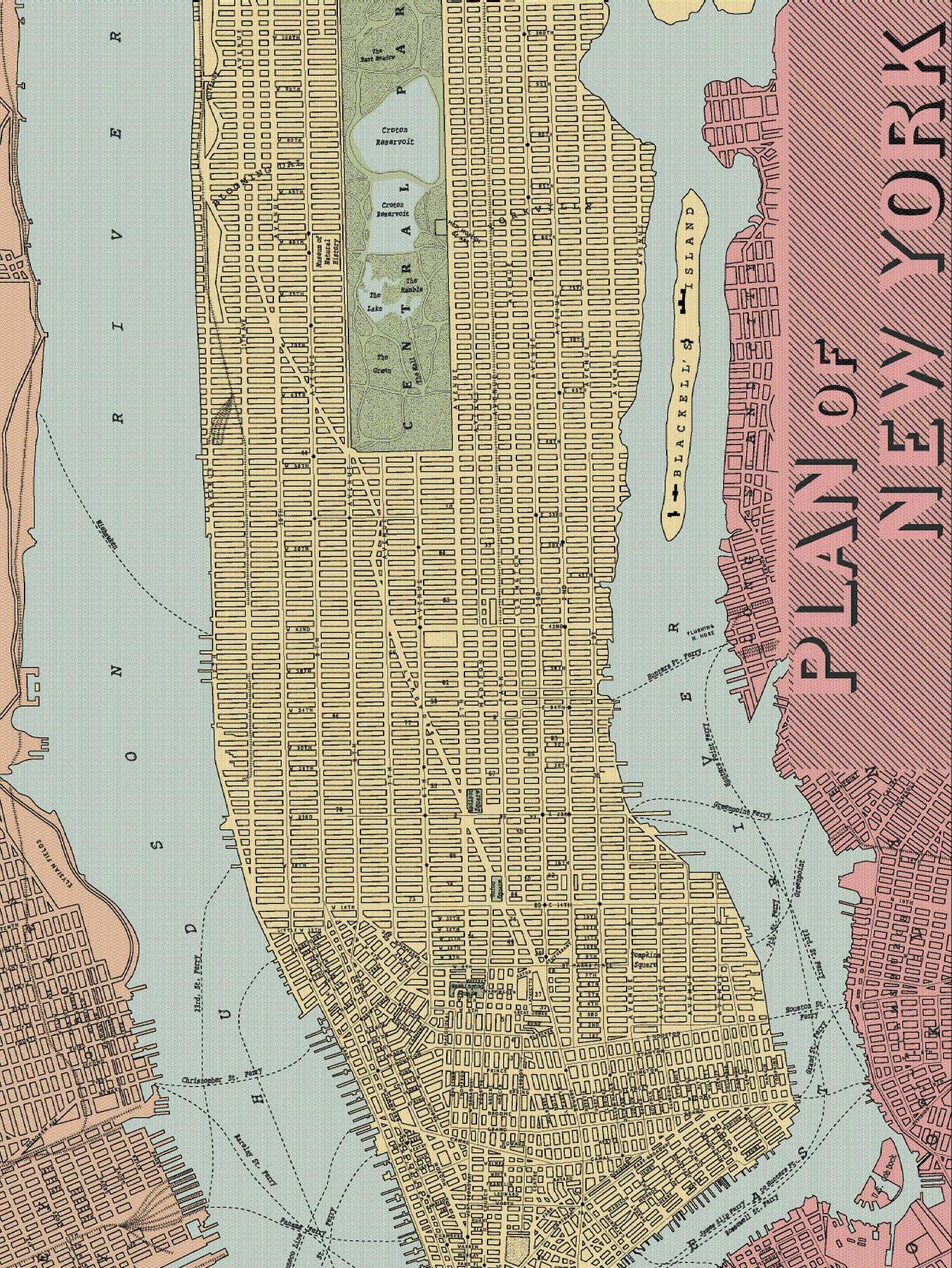 A vintage map of New York City.
A vintage map of New York City.
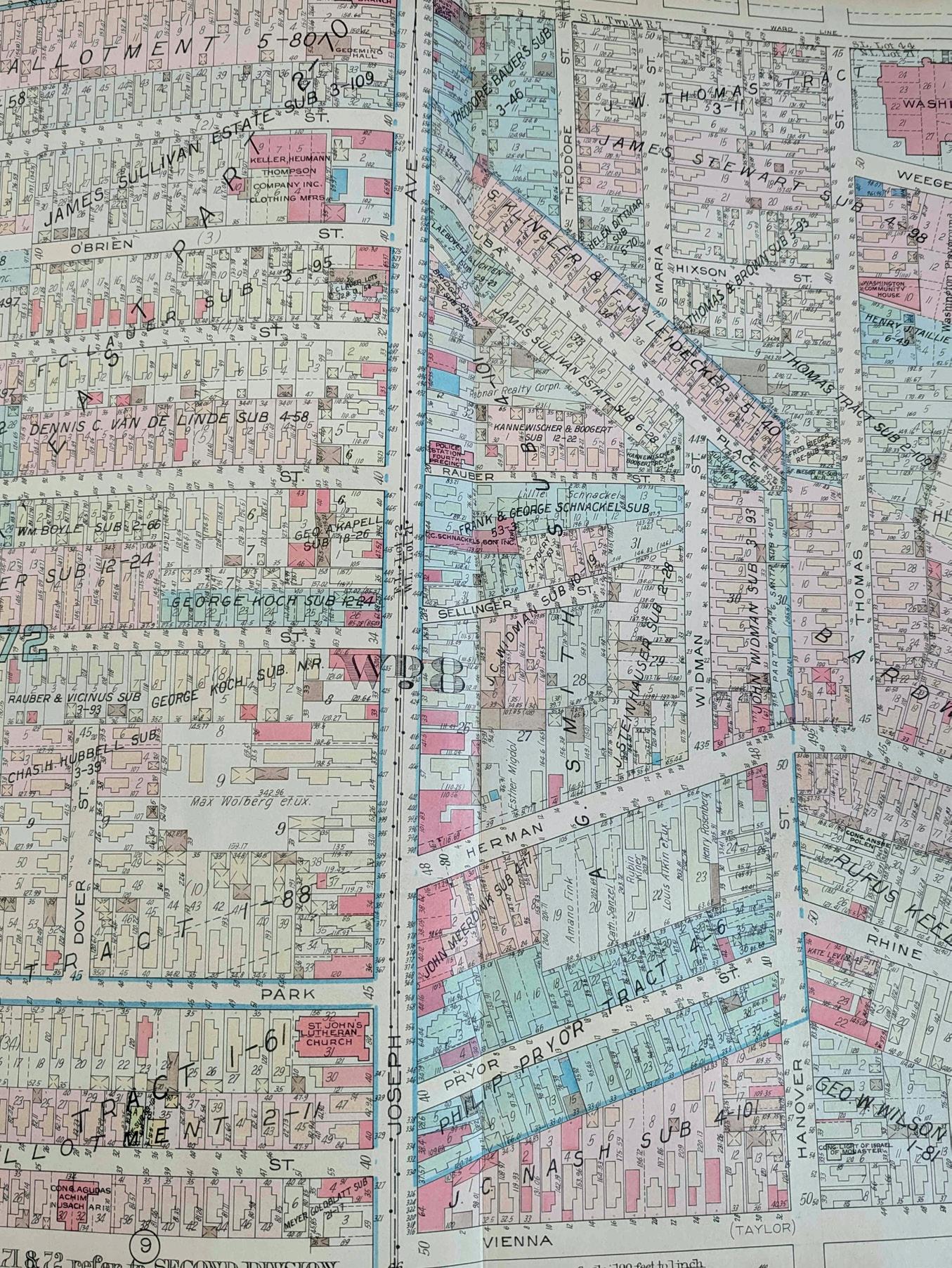
Since NYSLTA was founded, the land title insurance business has witnessed and been a part of many changes that helped shape the industry to what it is today. As the real estate marketplace has evolved in New York, the rationale for this association has also evolved to embrace circumstances unimagined by the small group of men who met in New York City in 1921.
in the ten decades of its existence, the association has become the voice of the industry and its members. By providing a common ground where competing businesses can collaborate, NYSLTA serves the mutual interests of its members and thereby better serves the industry, their clients, and the policy holders with new faces and players arriving every day.
With the constant changes in technology, leadership, laws, and other areas, the NYSLTA has become a hub of information and updates that brings people together. The association is also a means of building personal business relationships that extend beyond the workplace into friendships based on professionalism and respect.
New York is a large state with diverse geography and a multitude of communities, each with their own way of doing business. The volunteerism, time, and dedication that members contribute enables the association to run smoothly while reflecting the voice and aims of the title industry. These traditions have become the core character that will carry title professionals into the next century.
Robert Treuber, NYSLTA Executive Director, and Regina Capone, Director of Finance & Operations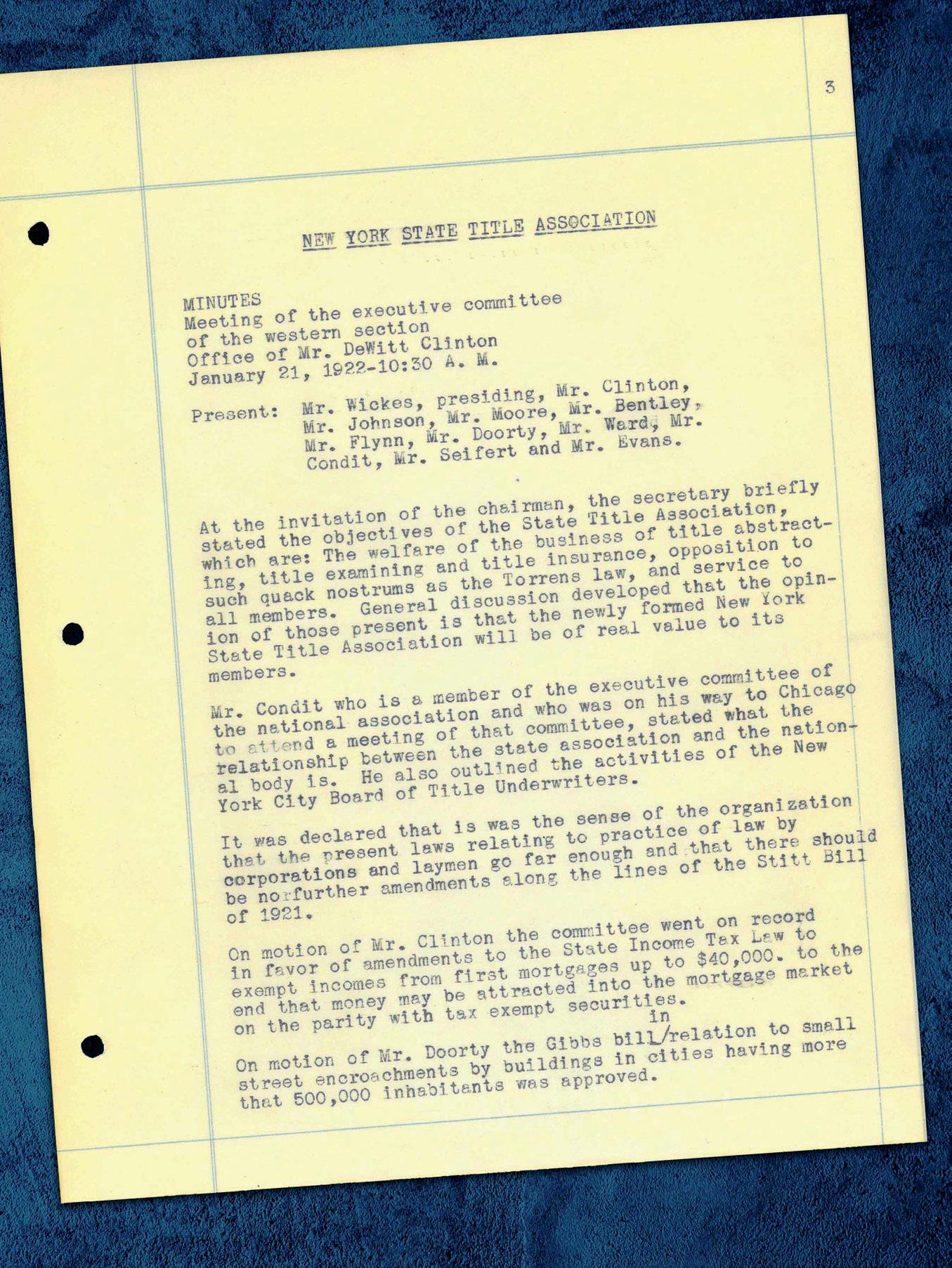
it was January 21, 1922. The executive committee of the western section of the six-month-old New York State Title Association convened its monthly meeting at 10:30 a.m. in the office of DeWitt Clinton, namesake of New York’s sixth governor. As the gathering got underway, the presiding chairman invited the secretary to state the objectives of the fledgling organization. He clearly and earnestly declared that they were “the welfare of the business of title abstracting, title examining, and title insurance; opposition to such quack nostrums as the Torrens Law; and service to all members.” What’s more, according to the minutes of the meeting, “General discussion developed that the opinion of those present is that the newly formed New York State Title Association will be of real value to its members.”

One hundred years later, the organization now known as the New York State Land Title Association, inc. (NYSLTA) has undoubtedly proven its immense value to the title underwriters, title agents, and ancillary professionals who comprise this indispensable—yet often unheralded—industry across the Empire State.
Representing twelve underwriter title corporations and more than three hundred agencies, abstractors, and associate members, the NYSLTA has become a beacon of unwavering support, integrity, and promise for New York’s title insurance community. in fact, over the last century, the association has dedicated itself to supporting three specific pillars of service for its members: advocating on their behalf, promoting professionalism and best practices within the industry, and providing unprecedented educational opportunities to all individuals who work in the title insurance arena.
This is the story of the New York State Land Title Association’s steadfast efforts and how it has helped shape the face of the statewide title insurance industry.
 This iconic architectural feature of the New York State Capitol in Albany, designed by architect Isaac Perry, cost the state $1.5 million by the time its intricate, hand-carved stonework was completed in 1899. The vast sum spent on this Great Western Staircase inspired its nickname, “The Million-Dollar Staircase,” as the expense caused quite a scandal at the time. Today, the staircase is open to the public and is a source of great pride for the citizens of New York.
This iconic architectural feature of the New York State Capitol in Albany, designed by architect Isaac Perry, cost the state $1.5 million by the time its intricate, hand-carved stonework was completed in 1899. The vast sum spent on this Great Western Staircase inspired its nickname, “The Million-Dollar Staircase,” as the expense caused quite a scandal at the time. Today, the staircase is open to the public and is a source of great pride for the citizens of New York.
In 1907, the American Association of Title Men
(AATM) formed “for the purpose of unifying the abstract profession; for the organization of associations of abstractors and title men in states where none exist.” At the time, the newly established national organization represented the abstract business in thirteen states. It wasn’t until 1921 that New York State’s title insurance professionals joined the burgeoning AATM with the founding of the New York State Title Association. The group did so with a specific goal in mind: to advocate for the industry
and the people who work in it. The move to set up a statewide association was critical because of the sense of mystery that seemed to shroud the concept of title insurance. in fact, from legislators and regulators to the general public, there has long been a lack of understanding not only of the significance of this type of insurance in relation to real property conveyance, but also of the intricate and often challenging process that involves the search of a property to establish its chain of ownership and the subsequent underwriting of a policy that protects each succeeding owner who is an heir to that owner.
“If your heirs inherit your property, we protect them as well. And there should never be a claim on that property. You buy title insurance so you never have a problem.”
—Richard Estrella
 Richard Estrella
Richard Estrella
 Michael J. Berey
Michael J. Berey
“Our industry is so unknown. You only know our industry if there’s a problem,” explains Richard Estrella, New York State agency manager and senior vice president of Fidelity National Title insurance Group and past-president of the New York State Land Title Association. “When you look at the paperwork at the closing table and see a large fee for title insurance, that’s a one-time fee that allows us to protect your property for your entire ownership. if your heirs inherit your property, we protect them as well. And there should never be a claim on that property. You buy title insurance so you never have a problem.”
Over the years, misconceptions about the title insurance industry and how it operates have put agents and underwriters in precarious situations, as state legislators and regulators have proposed laws and regulatory changes that affected and potentially threatened the industry as a whole. For a century, the NYSLTA, which incorporated in the mid-1990s as a not-for-profit 501(c)(6) entity under the direction of former executive vice president Sharon Sabol, has been at the forefront of supporting its members and all title insurance industry professionals by keeping abreast of proposed changes that could be detrimental to businesses both large and small and taking action when necessary. As Michael J. Berey, former general counsel and senior vice president for First American Title insurance Company and past-president of the association explains, “The NYSLTA is the representative of the industry to the regulators and the legislature. it enables the industry to speak as a single unified voice to advance the interests of the industry, which in large part are the interests of the consumer because the title industry serves a significant positive function for that consumer. A healthy industry is important for the consumer and for the state of New York.”
in its earliest days, members of the title insurance industry often collaborated with state legislators to write and modify legislation that affected real estate transactions. According to Amelia (Amy) Kelly, formerly of the Seaport Title Agency, Ltd., and past-president of the NYSLTA, “in the very beginning, this group of men got together.
They were highly respected lawyers and bankers who already had the ear of many of the important people in the legislature and in the agencies of government. And those people came to the title association as experts in the field to find out what the impact of certain regulations or legislation would be.”
Beginning in the 1920s and spanning several decades, the NYSLTA worked with the state’s legislative chambers on everything from modernizing dower and curtesy rights of husbands and wives to ensuring compliance with federal statutes like the Soldiers’ and Sailors’ Civil Relief Act of 1940, which, among other things, required a lender to obtain proof that an individual was not in active military service before foreclosing on a property. it was a symbiotic relationship that also allowed title insurance professionals to stay up to date on and review items that were presented during legislative sessions. For example, in January of 1951, the NYSLTA’s bulletin announced, “The State Legislature is
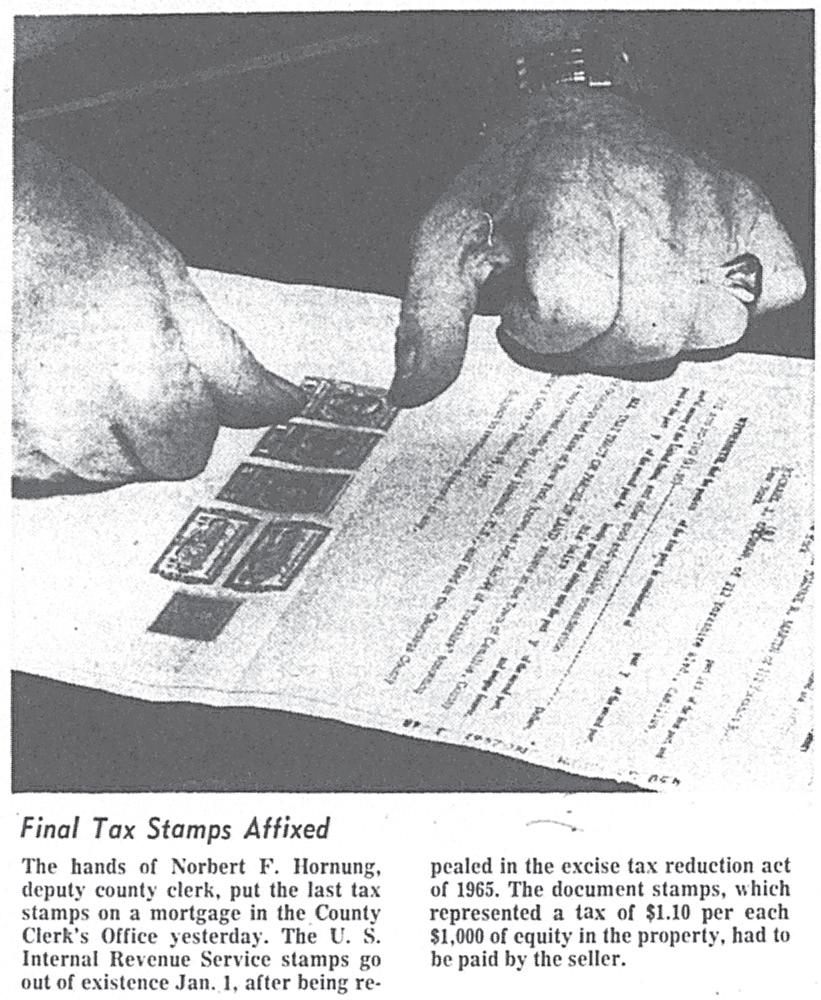
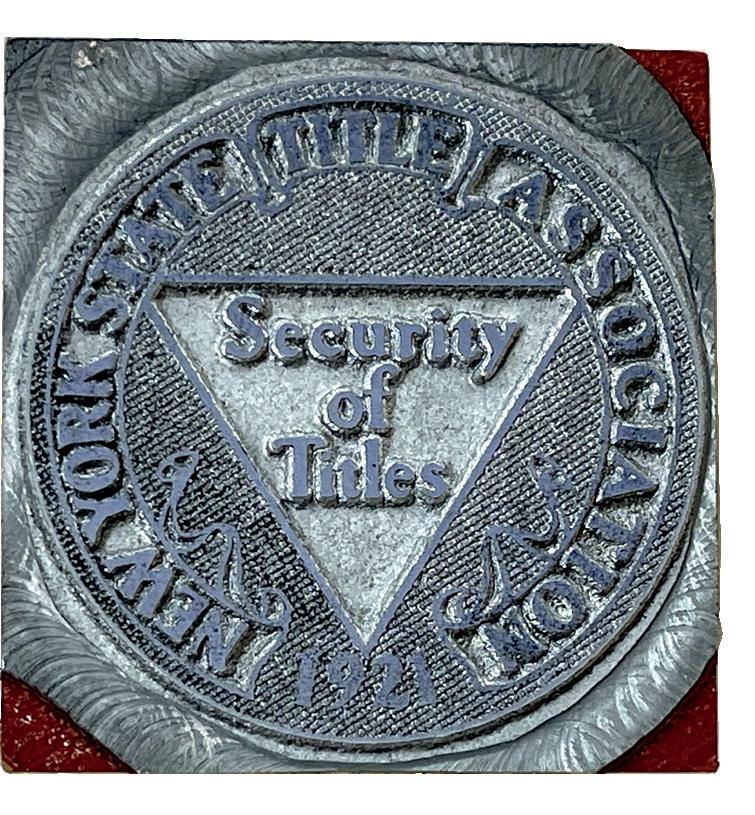
again in session in Albany. Several hundred new bills have already been introduced and many more hundred of them will be presented week after week during the next few months. Your Association, through its legislative committee, will, as in past years, check through all bills, select those which may be of special interest to our members, and forward to your desk a brief description of those considered important. Some of these will be found undesirable and others will merit our active support.”

The status quo endured for many years, with the NYSLTA regularly addressing troublesome proposed legislation and regulations and ensuring that title insurance agents and underwriters remained protected. However, things began to change in the 1970s and 1980s when the role of the title insurance professional in New York’s real estate conveyance process began to evolve and grow in scope in response to market pressures and new government requirements. For example, the title insurance industry expanded its already established responsibilities of collecting a wide range of fees and taxes that came due at the time of the closing of properties as a pass-through to state, city, and local governmental agencies, as well as, in some circumstances, to private creditors. As Estrella notes, “it really started adding to our plate. We had to make sure that we were not only doing our job, but we also had to start making sure that we were collecting monies that needed to be collected on behalf of other governmental entities, judgment creditors, lienors, and more. Things kept falling on our shoulders.”
Additionally, title insurance professionals recognized the importance of working collaboratively with county clerks and registers, who serve as stewards of New York’s public land records, on behalf of municipalities, local government agencies, and title search companies to ensure that access to public land records remained constant and records were protected in perpetuity. “What we do totally relies on the integrity of the public record,” explains Jean Partridge, chief counsel and managing member of Benchmark Title Agency, LLC, and a past-president of the association. To this day, the association maintains close cooperation with public sector recording officials in all of New York’s counties to search records on behalf of various clients and often provide helpful observations and insights to county clerks’ and registers’ offices regarding everything from indexing to establishing uniform procedures for the filing and recording of instruments.
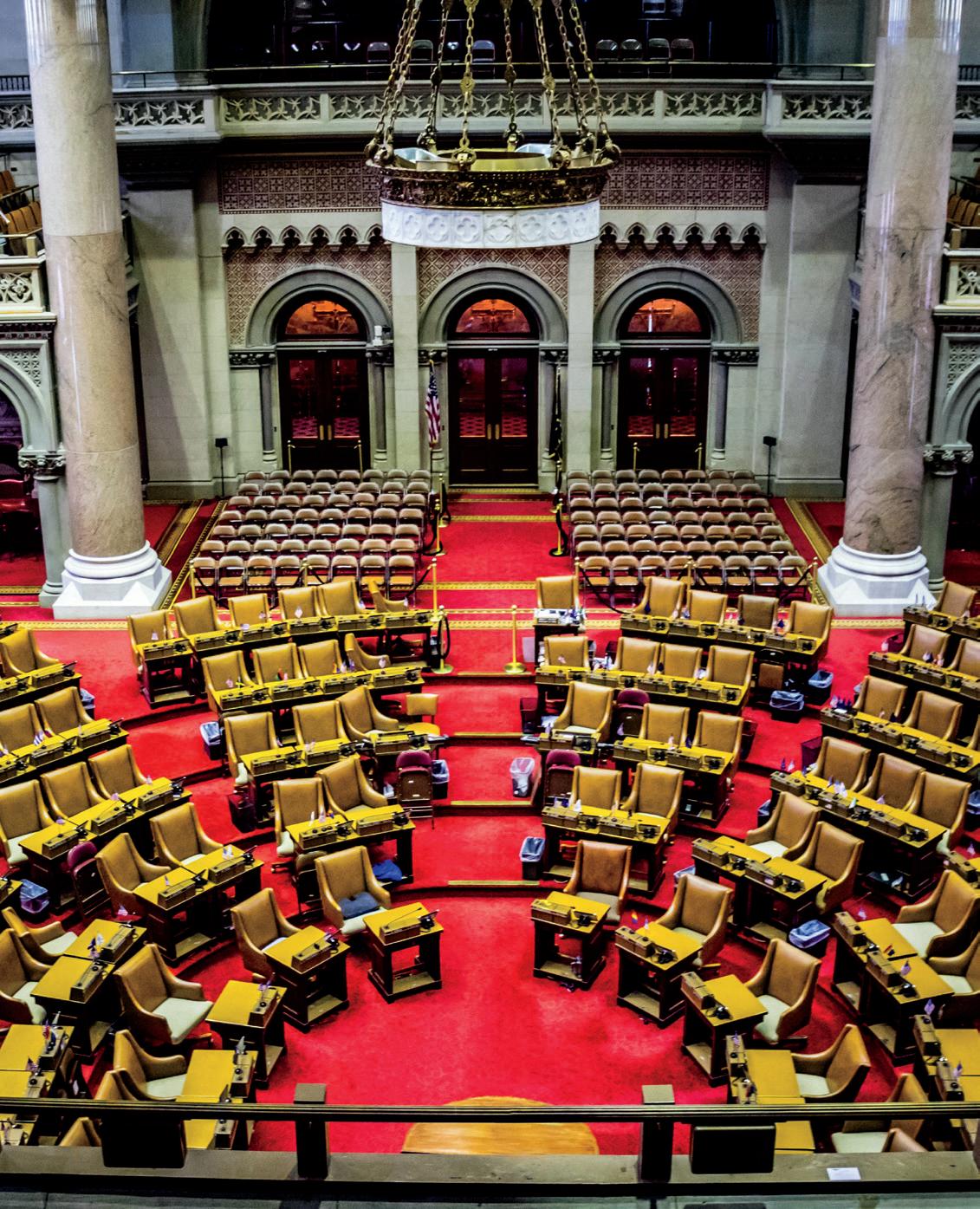
Early in his storied career in politics as mayor of Buffalo, governor of New York State, and then twenty-second and twenty-fourth president of the United States, Grover Cleveland served as the Erie County commissioner of deeds. At right is a document containing Cleveland’s first signature in that capacity, dated January 1859.
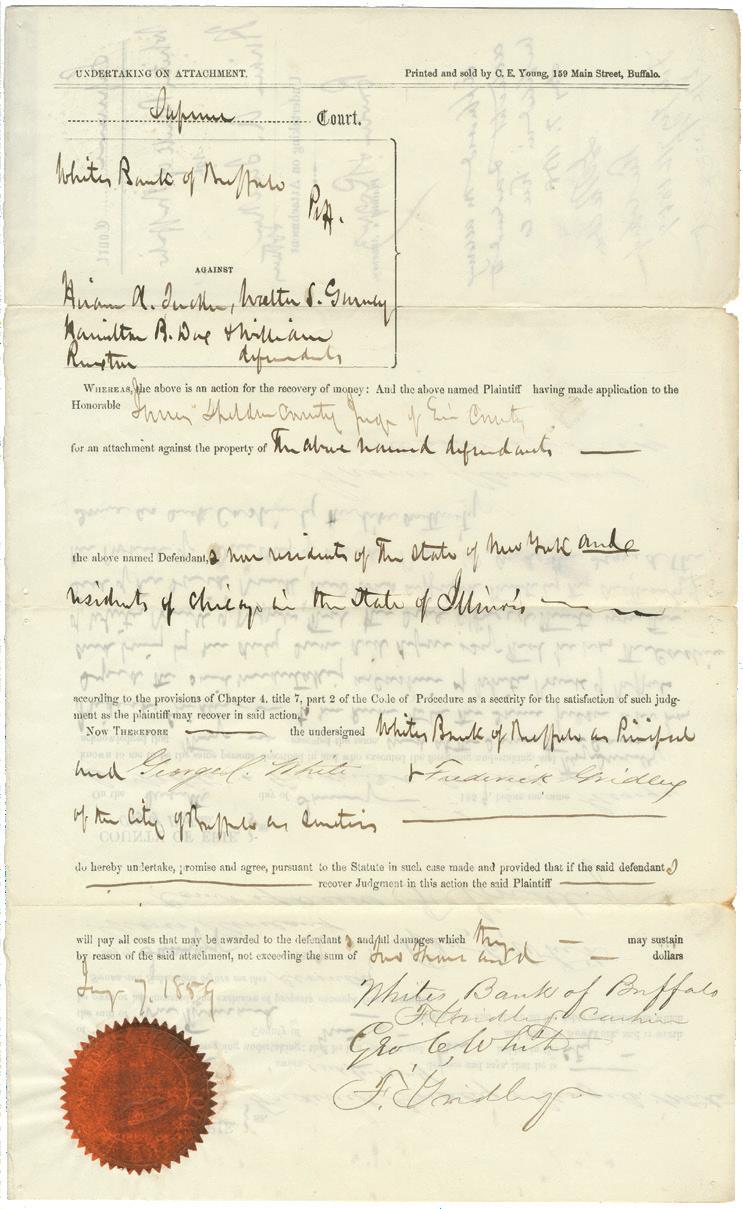

The seemingly constant introduction of new responsibilities opened the industry up to even more scrutiny. By the 1990s and 2000s, proposed regulations and legislative activity ramped up significantly, and several plans threatened to have daunting consequences on the industry.
When Sharon Sabol became executive vice president of the NYSLTA in 1989, she decided that the organization needed its own registered lobbyist and actually became one herself. “i felt we needed a voice in Albany,” she explains. “We encouraged our members to become familiar with their particular legislators. We wanted them to be able to go in and speak to them at their local offices or in Albany and, quite often, explain exactly what title insurance was and how it affected the population. That was very important.”
The association even launched an annual lobby day that allowed members to visit various state legislators and speak to important committees, such as the insurance and banking committees. Kelly recalls, “initially, there was interaction with local legislators on a piecemeal basis. if you had a friend who was a legislator, you could go to them if something particularly egregious was going on. But that was organized into a lobbying day, which was started by the agent section of the association. We would go to Albany on a particular day every year. We would have a set of talking points and discuss pieces of legislation that they were considering.”
 Sharon Sabol
Sharon Sabol
“Of all the trade associations that I am familiar with in all of my years, they are, in terms of their advocacy program, amongst the most involved grassroots members.”
What’s more, Sabol officially hired a lobbying firm in the 1990s to help spearhead formal lobbying efforts at both the legislative and regulatory levels. Albany-based Ostroff Associates initially began working with the abstractor and agents section of the association; members in this section include abstractors, abstract companies, and title insurance agents in the state. By the early 2000s, the company was retained to represent the entire association, including the title insurance section, which is comprised of title insurance companies licensed to do business in New York State. Lobbyist Scott Wexler, who began his relationship with the NYSLTA in 2006, immediately found himself impressed by the organization. “When it comes to business trade associations, these individuals are among the most active i’ve ever seen. Of all the trade associations that i am familiar with in all of my years, they are, in terms of their advocacy program, amongst the most involved grassroots members. They truly are involved at the deepest level,” he says. “Over the last ten or fifteen years, there’s been greater attention paid to the association by outside forces, from consumer groups to government regulators to the legislature. A lobbyist’s job is to analyze, to strategize,
—Scott Wexler

Scott Wexler
Since its inception decades ago, the New York State Title Agents Political Action Committee (PAC) has promoted the interests of the agents and abstractors section of the NYSLTA by building relationships with elected officials, educating legislators about issues facing our industry, and emphasizing the importance of our industry to the consumers of New York State.
The PAC is a bipartisan committee that supports legislators at the state level who understand the challenges of conducting the business of title insurance in New York.
Over the years, the goal of the committee, to strengthen and expand the PAC, led to the adoption of the NYS Title Agents PAC bylaws in 2016. With the adoption of the bylaws, and with the guidance of Ostroff Associates, inc., the PAC expanded its fundraising efforts, which increased its ability to support elected officials throughout the state.
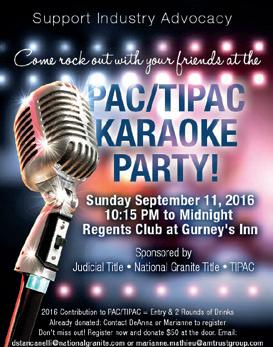
The PAC continues to thrive, thanks to the support of members’ pledges, written and personal solicitations, and a fundraising event at each annual NYSLTA convention. The ability to bring attention to the NYSLTA’s voice is crucial for the industry and for consumers of New York, assuring the continuation of its role as an advocate for the ever-evolving title insurance industry.
and to communicate, and we believe strongly in using all of the talents and abilities of our clients. The clients play a vital role, and the association has had a very successful legislative program.”
That program includes an effective routine carried out by the association’s legislative committee, through which Ostroff Associates compiles a list of proposed bills that could be of interest to NYSLTA members. That list is passed on to the committee, which reviews the bills in teams of two, according to Mary Jane Keyse, an attorney with Fidelity National Title Group and former chair of the legislative committee. “Once we review the bills, we rate them and decide if there’s something we need to take immediate action on,” she notes. “The most important ones to deal with are called priority one bills. We pass that information along to the officers on the board, who decide what we need to do. We may write memorandums of support or opposition, but we take our cue from the officers about the position we want to take. it’s a process.”
The NYSLTA’s steadfast efforts have allowed the association to tackle such issues as SB2688, which was introduced during the regular legislative session in 2009. The bill proposed to amend the workers’ compensation law and allow the state to offer its own title insurance or certificates of clear title. “it would have put the title business out of business,” says John J. Piccirillo, a past-president of the NYSLTA who worked for Lawyers Title insurance Corporation at the time. “We were still going through a recession, and someone thought the state should take over the title insurance industry. it was a very tough time. But we started a grassroots project where we reached out not only to everyone on the executive committee, but also to
all of the independent agents. We asked them to write to their local legislator, and we had a lot of people get behind that. i’m happy to say that the issue came up during my presidency, and it ended during my presidency.”
in 2016, the Department of Financial Services (DFS), which formed in 2011 under Governor Andrew Cuomo and merged New York’s insurance Department and the New York State Banking Department, introduced cybersecurity regulations that included such requirements as periodic penetration testing and increased cybersecurity staff for companies of all sizes. While the new requirements could be instituted easily by large companies, they were financially challenging for small, independent firms. According to Bill Collins, director of title insurance for Frontier Abstract and Research Services, inc., the regulations dropped the day after he was sworn into office as NYSLTA president in 2016. “We had to put together a quick committee to look over the regulations, figure out how they would affect us, and then come up with solutions or alterations that we would want to propose to DFS,” he says. in addition to submitting a letter to DFS recommending possible solutions, executive vice pres-



ident Robert (Bob) Treuber, who took the reins after Sharon Sabol retired in 2010, testified before the state legislature to advocate for changes—many of which were accepted and included in a revised version of the regulations. Upon the release of the revised regulations, all NYSLTA members were able to adapt quickly thanks to those requested changes, with the association providing as much subsequent information as possible to help foster industry-wide compliance with the regulation. The industry welcomed the changes, which actually were very pro-consumer, and became a strong advocate for cybersecurity across the board.
“When bills and regulatory issues matter to them, when they need to take action to express a point of view, they engage,” Wexler says. “They are active. This group is dedicated.”
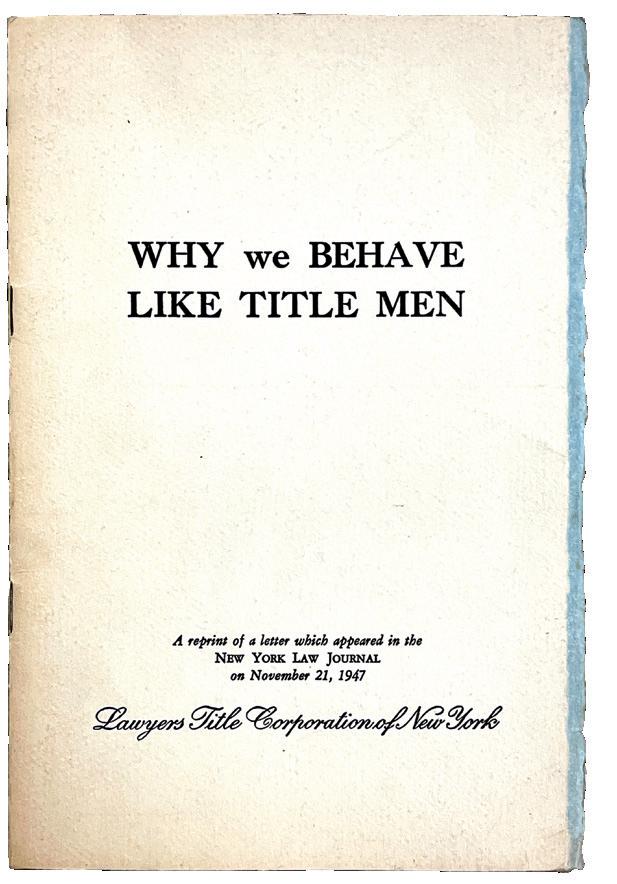
From its inception, the New York State Title Association advocated for the highest professional ethics in the industry, as described in a letter written in a 1947 issue of the New York Law Journal, reprinted here by the Lawyers Title Corporation of New York for its employees.
The NYSLTA’s dedication to addressing and ultimately cooperating with potentially troublesome regulatory issues was on full display with the introduction of insurance Regulation 206. Originally proposed in September of 2014 and set in place as an emergency regulation, 206 addressed premium accounts, fee disclosures, and the regulation of affiliated business arrangements. it initially was met with trepidation. However, the NYSLTA had pointed discussions with the DFS, requesting tweaks to the proposed regulation that would make it viable to be implemented across the industry in New York State. By October of 2017, DFS was ready to put the regulation into full, immediate effect. The NYSLTA worked earnestly to ensure that members had all of the information they needed to be in compliance with Regulation 206, which took effect in late October of 2017.
Of course, not every lobbying effort resolved so smoothly, and the NYSLTA found itself in uncharted territory during that same period of time in 2017, when the introduction of insurance Regulation 208 caused the most concern among title insurance professionals. in fact, the proposed regulation promised to wreak havoc on the industry. According to a memo written by Treuber to association members, “The proposed regulation would affect almost every aspect of the business of title insurance, from when you first market to a client to when you close a file and remit the premium.”
“Regulation 208 was the Titanic hitting the iceberg moment,” Estrella says. “i don’t think there was a greater headline than Regulation 208 galvanizing the industry and the Land Title Association.”
At issue were several directives that had the potential to put upwards of 40 percent of small title insurance agents and companies out of business. The mandates included an immediate 5 percent reduction in premiums, significant changes to the compensation of the closers who represent title agents and underwriters at the closing table, the elimination of marketing activities like meals and entertainment with potential clients, and more. Quickly, the NYSLTA sprang into action, writing letters during the comment period, meeting with DFS staff members, and even testifying before Assemblyman Kevin A. Cahill during a public hearing. Unfortunately, the appeals were unsuccessful. “i remember in one of those meetings [with the DFS], we were asked, ‘Are you going to sue us?’ i responded, ‘That’s not our plan. That’s not our wish,’” Estrella states. “i remember thinking, ‘i do not want to sue our regulator.’”
However, after much internal deliberation, the New York State Land Title Association became the first organization to do just that. “Small underwriters were going to go out of business. Title agents were going to go out of business. People were going to lose their jobs,” he continues. “That became the moment we realized we have to [move forward with litigation].”
“We decided to start looking for law firms,” recalls Richard Giliotti, president of Judicial Title insurance Agency and chair of the NYSLTA agent section. “We saw different types of firms, but Gibson, Dunn & Crutcher LLP fit our needs best.”
Estrella adds, “Their professionalism, their connections, their demeanor—it was very matter of fact. They said, ‘We’re not here to hurt anyone. We’re here because we have an issue that needs to be resolved.’”

“We needed to develop clear messaging and demonstrate that we are honest brokers and subject matter experts.”
—Nancy Farrell
The NYSLTA had to raise nearly two million dollars from its members to fund the litigation, which lasted for more than two years. it also needed individual members to put their names on the lawsuit as plaintiffs so the litigation could move forward; this role was filled by John Hughes of Great American Title Agency and Nancy Farrell of venture Title Agency, who also served as the first female agent president of the association in 2008 and 2009.
“it was a tumultuous time, and the livelihood of many agents were held in the balance. i felt it was important for the DFS to understand the implications of their actions on all agencies regardless of size and to know that they had no understanding of our industry even though they had the power to govern us,” Farrell says. “NYSLTA became a strong force while litigating and assisted in providing resources for the court battle to come.”
in fact, the association worked closely with its counsel to draft briefs and prepare the oral argument, which occurred on June 14, 2018. immediately, the judge overseeing the case granted a stay on the 5 percent rate reduction, and by July 5, the regulation was struck down in its entirety. However, the DFS appealed, and the pro-

cess continued. Once again, the NYSLTA won in the lower court, with Regulation 208 being annulled on First Amendment and due process grounds. Yet another appeal prolonged the final outcome, and the association ultimately decided to walk away from the proceedings with a partial victory, winning on such matters as closer compensation yet losing on the rate reduction and marketing expenditures issues.
“it was almost like David and Goliath,” Partridge asserts. “We were going against a government entity, which is not easy to do. i think everyone would agree that it was worth the cost of the litigation. We were successful on many issues. Even though it was a long and arduous road, in the end we were happy with the results.”
“Regulation 208 was the Titanic hitting the iceberg moment. I don’t think there was a greater headline than Regulation 208 galvanizing the industry and the Land Title Association.”
—Richard Estrella


Farrell adds, “The NYSLTA went through changes and a great deal of internal reorganization during that time and grew tremendously. The association helped unite the industry to speak with one strong voice.”
The unprecedented litigation with the DFS not only brought all of the members of the NYSLTA together to fight for a common goal, but it also showed the association the importance of being even more driven in terms of its ongoing advocacy efforts.
in 2019, the advocacy committee was formed as a direct result of the experience.
“We realized that we needed to switch gears from being reactive to proactive,” says DeAnna Stancanelli, principal of National Granite Title insurance Agency, inc., and NYSLTA past-president. “We needed to prepare the association for any future regulation or legislation, and we wanted to convey an accurate image of the association while engaging with regulators, legislators, and the governor. We needed to develop clear messaging and demonstrate that we are honest brokers and subject matter experts.”
Dawn Pereyo, New York regional manager for Westcor Land Title insurance Company and past-president of the association, agrees. “We needed to take a 30,000-foot view of what may impact the industry. We work in conjunction with the legislative committee to consider active legislation and decide how we should approach it.

We have to be proactive in helping to shape and guide the things that affect us, our constituents, and the people in our industry,” she says. What’s more, she adds, the NYSLTA strives to use its successful advocacy efforts to shine a light on the positive work being done not only by the association itself, but also the industry.
The urgency of this work has prompted the advocacy committee to meet biweekly to discuss issues of concern. And in the few years since the committee’s establishment, it has made incredible strides, including lobbying for changes to a Remote Online Notarization Bill and urging closer controls on power of attorney authorizations. Much of the work done by the committee involves regularly encouraging members to get active by building relationships and engaging with their local legislators to discuss proposed bills and any unintended consequences that can derive from them. “it’s really important that our entire membership understands the value of every person and what they can contribute,” Pereyo says. “Everyone has a local legislator they can talk to. Everyone can tell their story. And we have so many members that want to help.”
The efforts undertaken by the advocacy committee, as well as the entire association, harkens back to the earliest days not only of the NYSLTA, but also of the AATM. in February of 1928, Richard B. Hall, executive secretary of the American Association of Title Men, wrote an open message to the members of the fledgling association in its monthly bulletin. He stated, “The title business is at the threshold of a new epoch—it is just beginning to find itself, and the future will be just as great as the titlemen care to make it and exert themselves to achieve the possibilities. [T]he title business will never be anything more than those in it make of it. There must be a lot done in the next few years, and we will have to do it ourselves.” And the sentiment holds true to this day.
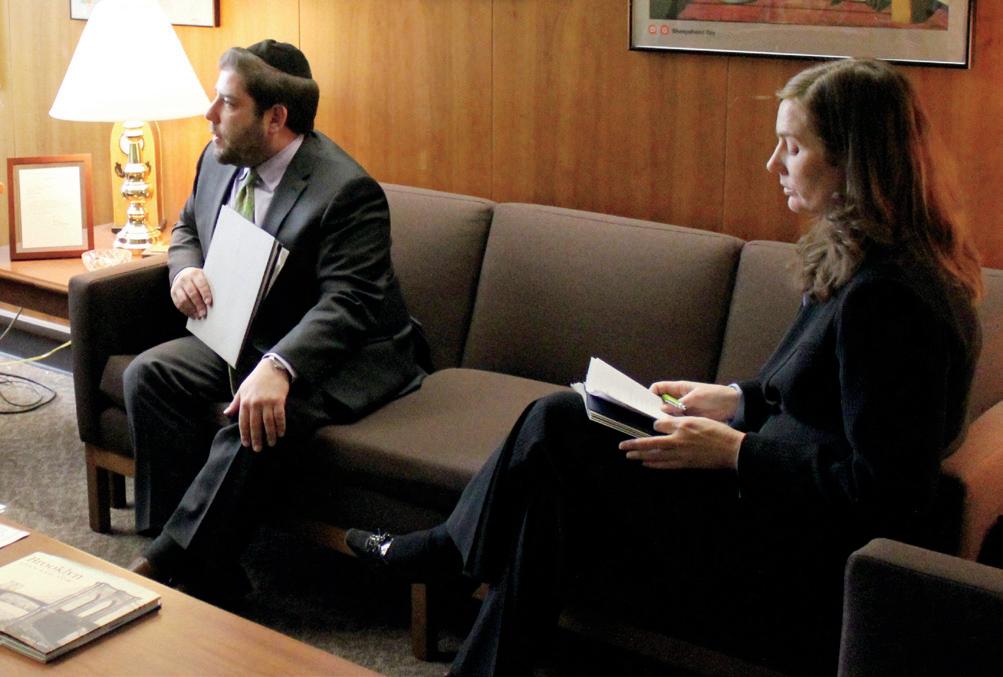
The title insurance profession is a vital and integral part of our country’s economy. It facilitates real estate transactions; enhances the reliability and accuracy of the data in our land title record systems; acts as the conduit through which many governmental and other liens are paid; and affords consumers peace of mind that their interest in real property is protected.
The New York State Land Title Association (NYSLTA) is dedicated to promoting principles, values, and standards of behavior that guide the title insurance professional’s decisions, activities, procedures, and systems in a way that serves the needs and interests of the consumer, the title industry, and its constituents.
In furtherance of its commitment to maintaining and exhibiting the highest standards of business and professional ethics, NYSLTA has implemented the following Code of Ethics and Conduct intended to protect the consumer and the title industry while informing its members of the association’s expectations. This code supersedes all prior codes and will be reviewed annually to ensure that it reflects the evolving needs and interests of the consumer as well as the title industry.
FIRST: Maintain and enhance the integrity of the title insurance profession. Integrity entails two components: The first is honesty and candor, which may not be subordinated to personal gain or advantage. The second is a prohibition against fraud.
SECOND: Engage in practices which will further the interests of the public and the title industry.
THIRD: Treat fellow title insurance professionals and consumers with dignity, courtesy, and respect; and maintain a spirit of professionalism.
FOURTH: Comply with all governmental laws, rules, and regulations applicable to title insurance, as well as this Code of Ethics and Conduct. If a title insurance professional is unsure of whether a contemplated action is permitted, the title insurance professional should consult with the appropriate resource expert.
FIFTH: Refrain from any form of retaliation against a title insurance professional who, in good faith, reports any conduct or activity that the title insurance professional reasonably believes violates any law, rule, or regulation applicable to title insurance, or this Code of Ethics and Conduct, even if the subject conduct does not actually violate the law.
SIXTH: Refuse to participate or engage in any real estate transaction or business arrangement where a conflict of interest exists, including when a title insurance professional and/or a title insurance professional’s family member or firm has a present or contemplated interest unless such interest is specifically and timely disclosed and consented to by all affected parties.
SEVENTH: Refuse to participate in any agreement or arrangement, whether oral or written, that results in the payment to a person of any commission, rebate, or other thing of value received or provided in exchange for a referral or reward of title insurance business which violates any state, federal, and/or local laws.
EIGHTH: Act with the care, competence, and diligence that a prudent professional would exercise when examining titles to real property; issuing title commitments and title policies; and providing requested ancillary services (duty of care).
Competence incorporates knowledge and skill. In the event a title insurance professional is confronted with a matter which the title insurance professional is not sufficiently competent to address, such title insurance professional must gain the competence, obtain assistance, or refer the consumer to a competent professional with the required expertise. A title insurance professional should always strive to keep abreast of the latest developments in the title industry and promote the continuing education of title insurance professionals and consumers.
Diligence requires providing professional services, including responding to consumer inquiries, in a prompt and thorough manner.
NINTH: Engage in marketing activities which are informative and facilitate the educated selection of the title services provider that best fits the consumer’s needs.
TENTH: When providing title insurance, the title insurance professional must disclose the nature of the services and products provided, including ancillary services; the costs of these services and products; and the types of additional costs that the consumer may incur in the consummation of the real estate transaction.

